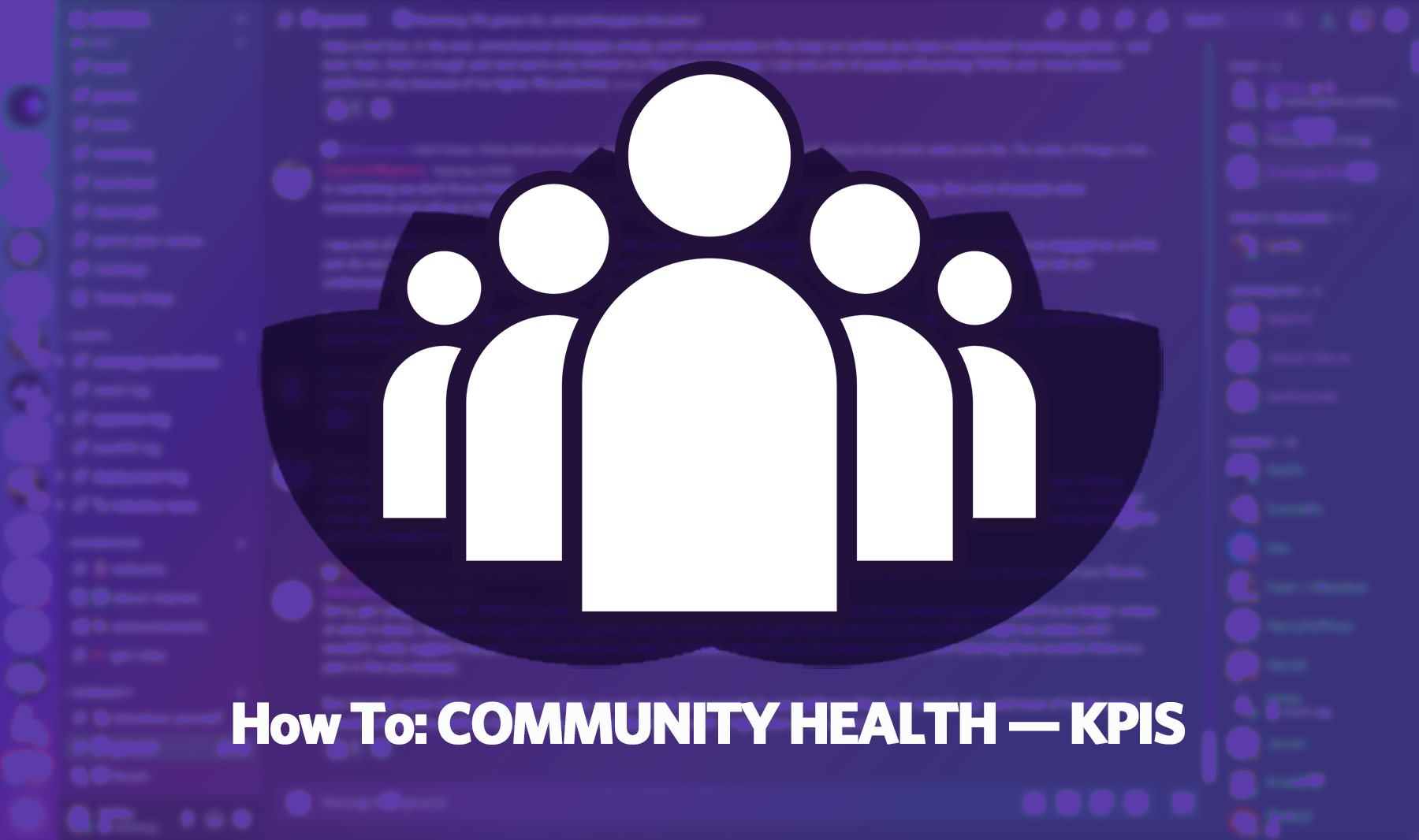Blog • 22nd January 2025
How To Measure and Promote Your Indie Game Community’s Health
👥 5 Actionable tips to ensure your community remains a safe space for everyone!

Table Of Contents
- 🔁 Understand Your Community’s Growth Cycle
- 🎯 Set Realistic Community KPIs
- 🏛️ Identify and Monitor Your Community Health Pillars
- 💬 Gauge Your Fans’ Interactions
- So… what’s next?
Laying the foundations of your indie game’s community is often the first step in a long journey.
As your title gains notoriety and attracts new people, you’ll want to ensure the community remains a safe, welcoming space – a place where both veterans and newcomers can interact and where bad actors aren’t given a chance to take root.
But, especially if you’re busy with the actual development of your indie game, how can you reliably take care of your community’s health? And is there anything specific that you should do to keep toxic behavior at bay while promoting player interaction?
Let’s take a closer look!
🔁 Understand Your Community’s Growth Cycle
Before you can start tracking community health, you should have a general idea of how communities grow and evolve over time.
Above everything else, keep in mind that communities can take a long while to reach their peak maturity. According to award-winning community manager Victoria Tran, your average indie game’s community will need between six and twelve months to fully mature – with specific games sometimes taking longer than others to gather support.
Throughout that time, traffic and activities within your community will likely ebb and flow, as new people join in and others settle into a routine. In the same article on her blog, Victoria also highlights how a maturing community should generate between 5 and 10 daily interactions per platform. That too, however, is very generic and will inevitably vary based on a multitude of factors.
🎯 Set Realistic Community KPIs
With that in mind, your next step should be to set realistic KPIs that you can measure your community health against.
As you do that, though, keep in mind that each community follows its unique path. While you might be tempted to directly compare your progress to that of other studios, you should instead pick something that fits your current community strategy and structure. This will allow you to adapt to your community’s unique characteristics, returning more actionable data to work with.
On that note, a few examples of good community health KPIs are:
- Population growth – or the gross number of new people that join your community hubs, follow your socials, and interact with your content. This will give you a rough idea of how attractive your community is while also measuring whether your promotional efforts are yielding their intended results;
- Number of daily interactions – measured as any post, comment, or content members contribute to the community across all platforms. Interactions might include a new thread on your Steam community forums, but also a like to your latest social media post or a meme shared in your Discord server.
- General player engagement – as opposed to people who just lurk in your community hubs, without contributing nor interacting with your content. Your active members / lurkers ratio will give you a better picture of how engaging your content and activities are, and might provide you with some insights into how to further encourage interaction.
- Community churn rate – regardless of how welcoming your community is, some of its members are bound to leave at some point. While a small turnover is completely natural and virtually inevitable, a higher churn rate might be indicative of an underlying issue with your community.
🏛️ Identify and Monitor Your Community Health Pillars
Aside from top-level community KPIs, you can also rely on additional data to get a more detailed picture of your community’s overall health.
In one of her blogs, behavioral scientist and Blizzard researcher Natasha Miller breaks down digital communities health into 7 categories (or pillars) – all of which contribute to a thriving, healthy community.
In short, Miller suggests how mutual interest, respect, psychological safety, trust (aka the willingness to help each other), community investment, influence (how players show appreciation or respond to bad behavior) and resilience (a community’s ability to stand up to bad actors) should all be monitored for deeper insight into how a community’s internal mechanics might be contributing to its health.
Miller also goes on to identify specific KPIs for each pillar, which should be continuously monitored over time. By looking for positive results and/or warning signs within your community – such as integration between veteran and new community members, the establishment of a tutoring system between players, or high reports of bad behavior, for example – you will get a detailed picture of how your community health is evolving.
Comparing them with the top-level community KPIs we saw above will allow you to make informed decisions as to where to focus to ensure your community stays healthy – especially as new elements of the game are introduced and the community itself expands.
💬 Gauge Your Fans’ Interactions
Finally, you should remember that not all contributions to your community carry the same weight and will have the same results.
As your indie game gains popularity and your community grows, some of its members will likely share feedback, suggestions, and positive comments about what you’re working on – inspiring you to keep developing your project while also fueling some of the pillars we mentioned above. Alongside these however, other people might join solely to bash your project or to harass the community as a whole – often with no real motive behind their actions other than personal enjoyment.
If you feel you might have a troll on your hands, measuring the tone, contents, and intentions of your fans’ interactions will paint a pretty clear picture of how healthy your indie game’s community is. Generally speaking, while a peaceful, inclusive community will easily attract new members, high levels of toxicity and rampant abusive behavior have the power to stall your growth entirely. In the worst of cases, repeated abuse might also push people to leave.
Whenever you spot toxic behavior, you should try to intervene as soon as possible to mitigate the damage. Don’t hesitate to weed out the bad actors, using every tool at your disposal to prevent them from spreading hate. Be ruthless. While banning an unruly member of your community might feel like a boundary you don’t want to cross, the rest of your fans will usually be grateful for that.
At the same time, don’t forget to reward people who actively promote healthy community practices. Giving your most active community members additional privileges, for example, could be extremely effective at encouraging good behavior. Similarly, you could also designate special Community Champions who get access to exclusive sneak peeks or content from your game based on their contribution!
So… what’s next?
Enacting change in online communities can take time, especially if you’re introducing new processes or completely restructuring the way you interact with your fans.
For that reason, as you go about promoting community health you should make sure to introduce any new approaches and activities in stages. Once you’ve set your KPIs and started monitoring the behavior of your community, don’t get discouraged if you don’t see immediate results.
Instead, record your data carefully and slowly fine-tune your approach until you reach your intended objective. If your workload and budget allow for it, establishing periodic review sessions where you go through the data in detail, enlisting the help of moderators to corral your fans, or working alongside a community professional are all great ways to ensure your indie game’s community remains healthy!
You can also seek the support of bots and automations. Alongside our own Coverage Bot – which sends Discord notifications of your creator/streamer coverage – you can find our favourite Discord community bots here!
Lastly, don’t forget to check out the rest of our blogs, and join the IMPRESS Discord to get more community management, marketing, and game development tips.
See you on the next one!
More from the ✨ Academy ✨

How To Get Content Creators' Attention!
📧 What does an effective outreach email look like? And is there anything you can do to stand out when pitching for coverage?
By Alessandro
27th February 2025

Indie Game Press Kit: Master The Basics
😺 Learn the basics and best practices for your indie game press kit!
By Alessandro
2nd November 2022
Make Your Game A Success!
With access to:
Coverage Bot
Press Kitty (free)
Academy (free)
Launchpad (free early access)
Steam Revenue Calculator (free)
...and more tools coming soon!
Get started with our innovative video game marketing toolkit, today!
✨ We'll also email you every time we write a blog post! ✨
